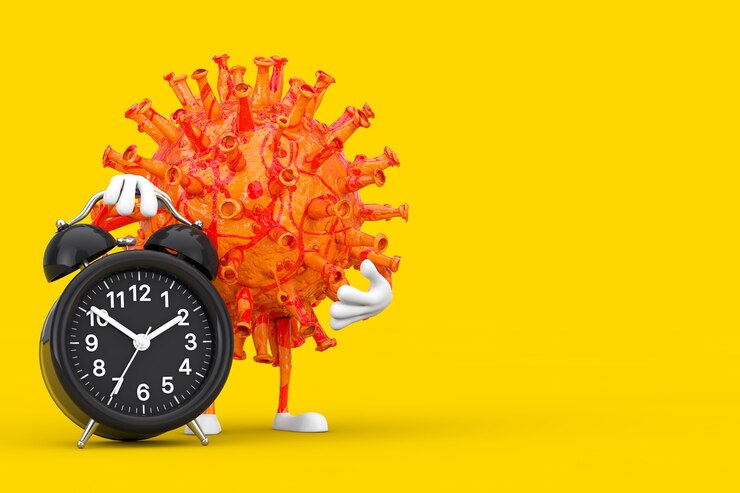Paulo Eduardo Brandão, Department of Preventive Veterinary Medicine and Animal Health, School of Veterinary Medicine, University of São Paulo, Brazil.
 The article The order of events on Avian coronavirus life cycle shapes the order of quasispecies evolution during host switches (Genetics and Molecular Biology, vol. 45) describes what it takes for a coronavirus to adapt to a new host species. The investigation was carried out by a consortium of Brazilian and Swedish scientists from the School of Veterinary Medicine, University of São Paulo, and the Swedish University of Agricultural Sciences from Uppsala, funded by both FAPESP and CNPq.
The article The order of events on Avian coronavirus life cycle shapes the order of quasispecies evolution during host switches (Genetics and Molecular Biology, vol. 45) describes what it takes for a coronavirus to adapt to a new host species. The investigation was carried out by a consortium of Brazilian and Swedish scientists from the School of Veterinary Medicine, University of São Paulo, and the Swedish University of Agricultural Sciences from Uppsala, funded by both FAPESP and CNPq.
Starting in 2019 and finishing in 2021, the research involved the use of Avian coronavirus passage from hamster kidney cells to primate kidney cells and an in-depth analysis of each mutation in the virus genomes, aiming to answer the time and mode of the emergence of genetic signatures that might predict if a coronavirus might adapt to new hosts.
Gathering this knowledge is of utmost importance for understanding how coronavirus zoonosis such as COVID-19 have emerged and if other coronaviruses known and unknown are prone to jump to other animal hosts, including humans. It was found that mutations along the coronavirus genome accumulate in an order that respects the virus life cycle, allowing a steady selection of virus population at each step after serial passages.
Avian coronavirus is an excellent model for coronavirus evolution as no high biosecurity laboratory is needed. A strain of this virus adapted to hamster kidney cells of the BHK-21 lineage was passaged 15 times in monkey kidney cells of the Vero lineage and, at each passage, mutations were investigated using the powerful Next Generation Sequencing approach, in apparel with a real time polymerase chain reaction that allows to count the number of virus copies.

Image: ShutterStock
The huge amount of data was then used to find patterns of where each mutation appeared in the coronavirus genome, how this could affect the function of its proteins and how the mutant viruses would succeed the less fit one’s passage after passage.
Genomic mutations and amino acids changes were found on proteins used by the virus to replicate its RNA (non-structural proteins) and also in those found in the virus particle (non-structural proteins), suggesting that the cloud of virus mutants in spill overs mutates in a pattern that parallels the virus life cycle, starting with the evolution of the receptor binding proteins as the spike protein and then the replicase proteins, stabilizing the total virus population size and allowing the coronavirus to thrive under a new environment.
Now, with this knowledge, we can revert the clock from any emergent coronavirus and compare with the hot spots found in this research to understand how well this virus is adapted to humans, for instance, thus predicting the severity of future coronavirus pandemics.
Though this investigation allowed to stablish a model to coronavirus molecular evolution in species jump, the use of cell cultures is a rather limited way to access virus-host interactions, as the variety of cells and the immune system found in animals that serve as hosts to coronaviruses pose a much more complex filter to virus evolution. Extending this research to artificial coronavirus infections organoid cultures or laboratory animals and to natural infections might allow us to refine these data and check their consistency.
References
CUI, J., LI, F. and SHI, Z.L. Origin and evolution of pathogenic coronaviruses. Nat Rev Microbiol [online]. 2019, vol. 17, pp. 181-192 [viewed 30 September 2022]. https://doi.org/10.1038/s41579-018-0118-9. Available from: https://www.nature.com/articles/s41579-018-0118-9
To read the article, access
BRANDÃO, P.E., et al. The order of events on Avian coronavirus life cycle shapes the order of quasispecies evolution during host switches. Genet Mol Biol [online]. 2022, vol, 45, no. 2, e20220034 [viewed 30 September 2022]. https://doi.org/10.1590/1678-4685-GMB-2022-0034. Available from: https://www.scielo.br/j/gmb/a/mW6TWPVYBr6hKwrrGcfXF4n/
External links
Paulo Eduardo Brandão – perfil docente: https://uspdigital.usp.br/datausp/publico/perfil/perfil.jsp?codpes=1307000
Genetics and Molecular Biology – GMB: http://www.scielo.br/gmb
Como citar este post [ISO 690/2010]:












Recent Comments